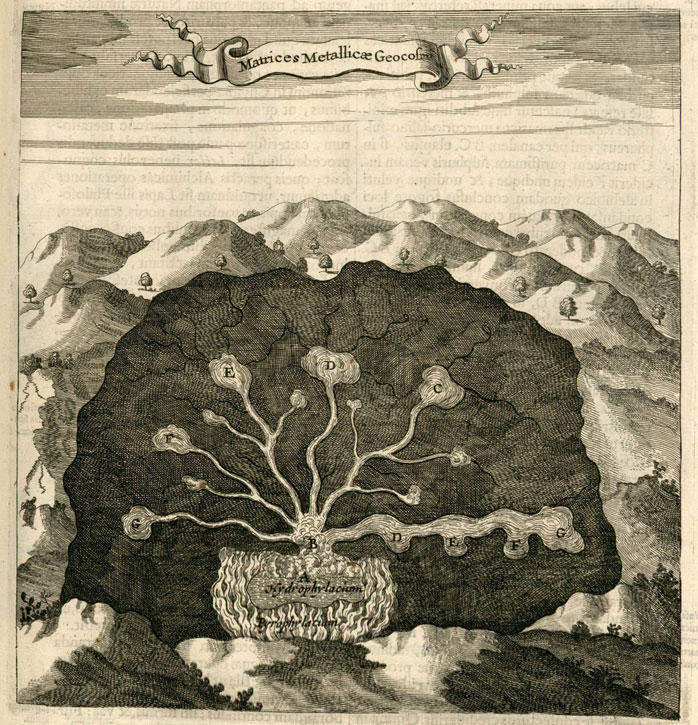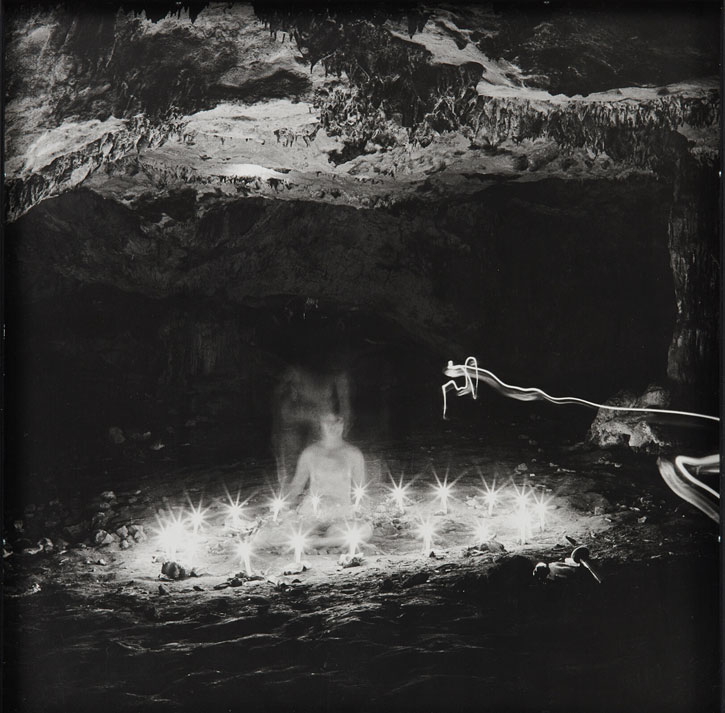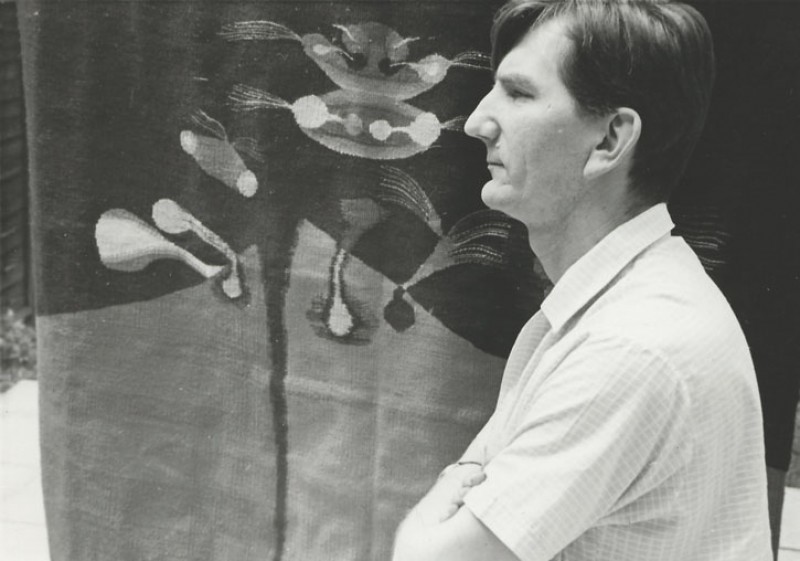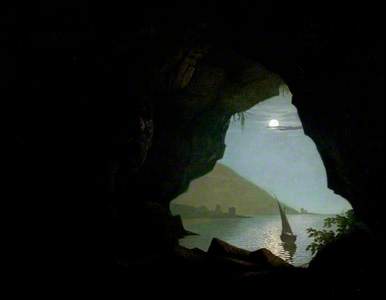Caves are at once inviting and forbidding – they are sites of intrigue and wonder yet also dark and disquieting places.
Once our homes, throughout history caves have been the subject of much speculation. In mythology, they are the domain of monsters and spirits, while in literature they are hideouts and repositories of hidden treasure. Artists have long been drawn to these subterranean spaces and some of our earliest known artworks were made on their walls.
Installation view of 'Hollow Earth: Art, Caves & the Subterranean Imaginary'
'Hollow Earth: Art, Caves & The Subterranean Imaginary' (until 22nd January 2023) at Nottingham Contemporary is an ambitious exhibition examining the many ways in which caves have inspired artists down the centuries. Bringing together works by more than 50 artists, it invites us to descend into the depths to consider themes of transformation, illusion, concealment and discovery. Along the way we encounter caves as religious sites, places of refuge, sublime landscapes and burial grounds.
The exhibition is itself designed to evoke a journey into a cave, gradually progressing deeper into a dark and unknown interior. At its threshold, we find a page from Athanasius Kircher's lavishly illustrated book Mundus Subterraneus (1665), showing the Earth's innards filled with interconnecting channels of fire.
Illustration of 'matrices of metal'
1664, illustration from 'Mundus Subterraneus' by Athanasius Kircher (1602–1680) 
The Jesuit scholar proposed his curious theory after climbing into the crater of Vesuvius, an experience echoed by Caragh Thuring's painting Inferno (2018), in which a group of silhouetted figures standing on the edge of a raging volcano illustrate the taste for adventure that caves can arouse.
Installation view featuring the painting 'Inferno'
2018, oil on linen by Caragh Thuring (b.1972) 
Inside, a cave's mouth becomes a rocky frame for a serene moonlit view of the Tyrrhenian Sea in Joseph Wright of Derby's Grotto in the Gulf of Salerno (1780–1781). The painting is one of several paintings depicting the grottoes near Naples that Wright based on drawings made during a tour of Italy in 1774.
Grotto in the Gulf of Salerno, Italy, Moonlight
1780–1790
Joseph Wright of Derby (1734–1797) 
His composition is mirrored by René Magritte's surreal meditation on the relationship between reality and illusion, La condition humaine (1935). Here, the mouth of a cave frames an easel holding a painting that appears contiguous with the mountain landscape beyond. A fire inside the cavern evokes Plato's famous allegory from his Republic (375 BC), in which prisoners mistake shadows flickering on a cave wall for reality.
La condition humaine
1935, oil on canvas by René Magritte (1898–1967) 
Prehistoric rock art is found on every continent except Antarctica. In the twentieth century, as more discoveries were made by anthropologists such as Leo Frobenius, modern artists began taking note. A selection of photographs on display from expeditions led by Frobenius in Algeria, Libya and Spain show members of his team meticulously documenting the ancient material culture that they found. Their copies of rock paintings and engravings were published widely, inspiring artists such as Paul Klee, Alberto Giacometti and Jackson Pollock.
For her mesmerising film Tassili (2022), the Algerian artist Lydia Ourahmane travelled to the UNESCO World Heritage Site of Tassili n'Ajjer, a vast plateau in the Sahara Desert with one of the most important groupings of prehistoric rock art in the world, dating back to 6000 BC.
Tassili
2022, video still by Lydia Ourahmane (b.1992) 
Here, she recorded the site's otherworldly geological formations and the strange figurative paintings inscribed on the sandstone, featuring what to modern eyes look like demons and extraterrestrials.
The ancient stone carvings of the Warrau, an indigenous Amerindian community in North Guyana, were of great importance to the artist Aubrey Williams, who spent time with them in the 1940s, learning their language and recording their stories. The imagery in earthy abstract paintings such as Birth of Maridowa (1959), has a raw, primeval quality not unlike the Warrau's ancestral petroglyphs that Williams studied closely.
Conversely, the feminist artist Mary Beth Edelson worked alone, visiting remote places to perform her 'private rituals'. In 1977 she travelled to a Neolithic cave on the Adriatic island of Hvar in former Yugoslavia. 'I needed to do my rituals in an actual prehistoric cave; to experience a Neolithic site where I could smell the earth, poke around in the soil, breathe the air, and know that the cave air had circulated through my body and become a part of me,' she wrote.
A photograph from her Grapceva Cave Series (1977) shows the artist sitting in the gloomy cave amid a glowing circle of candles.
Grapceva Neolithic Cave
1978, by Mary Beth Edelson (1933–2021) 
The deepest recess of a cave is technically known as the 'dark zone', and in Nottingham, a dimly lit room approximating these subterranean conditions is filled with works about dwelling in the dark, including a spine-tingling photograph of the Paris Catacombs filled with piles of skulls and bones that Félix Nadar took in 1862, and a brooding lithograph by Henry Moore depicting a rocky cavern on the rugged high moors of Yorkshire.
Moore, the son of a Yorkshire coal miner, had a self-confessed 'bias towards blackness and mysterious depths', as demonstrated by his wartime drawings of people sheltering in the London Underground during the Blitz of 1940 and the series of coalmining drawings he produced the following year in Wheldale colliery.
#HenryMoore Blitz Tube drawings #Art #Blitz pic.twitter.com/urxGE8N7YF
— Nick Grew (@nickgrw) July 30, 2018
During the Second World War, the nation's artworks were stored in caves to protect them from Nazi bombs. For her first solo exhibition in 1999, Polish artist Goshka Macuga presented a cavern-cum-gallery in an artist-run space in London. Titled Cave, the grotto-like environment was created from crumpled brown paper and contained artworks by Dexter Dalwood, Enrico David, Mark Titchner, and Michael Raedecker.
In Nottingham, she has recreated the walk-in installation, this time with a motley collection of rejected, unfinished or damaged works by artists including Peter Liversidge, Simon Morett and Ian Dawson. At its centre is an abandoned model space rocket, GONOGO (2021) – Macuga's rejected proposal for Trafalgar Square's Fourth Plinth.
#GONOGO by Goshka Macuga for the @fourthplinth in #TrafalgarSquare Rockets in the West End... awesome... pic.twitter.com/5hzy3i5Z5s
— Gavin Poole (@GavinJPoole) May 24, 2021
In the series of photographs that Life magazine photographer Gordon Parks produced to illustrate Ralph Ellison's 1952 novel Invisible Man, an anonymous African American man is seen descending through a manhole, down into the city's depths.
The Invisible Man, Harlem, New York
1952, silver gelatin print by Gordon Parks (1912–2006) 
The landmark book addresses the experience of Black identity in post-war America; the protagonist is invisible, he says, 'simply because people refuse to see me'. In an elaborate composite image, he sits in an underground room, an urban cave surrounded by lightbulbs intended to make the invisible visible.
Invisible Man Retreat, Harlem, New York
1952, silver gelatin print by Gordon Parks (1912–2006) 
Towards the end of the show, we are brought back to the surface by Ilana Halperin's The Rock Cycle (2021). This selection of old bricks and tiles was submerged in the subterranean springs of Saint Nectaire in France. The water in the caves is so rich with calcium carbonate that it petrifies anything it touches, delivering a rapid accretion of limestone over the course of a few months, which in other scenarios would normally take decades. With their smooth, organic appearance, the glistening, pastel-hued forms appear like stones washed up on a beach.
Installation view featuring 'The Rock Cycle'
2021, installation by Ilana Halperin 
Like many works in this engrossing exhibition, Halperin's sculptures demonstrate the transformative potential of caves. But, we also see that caves are hard to define. They confound, surprise, and exceed our attempts to grasp their true nature. As Nottingham Contemporary's outgoing director Sam Thorne writes, 'when we cross the threshold to a cave, what we think we know recedes from view'.
It is precisely their mysterious, unknowable qualities that make them so irresistible.
David Trigg, writer, critic and art historian
'Hollow Earth: Art, Caves & The Subterranean Imaginary' at Nottingham Contemporary runs until 22nd January 2023
























